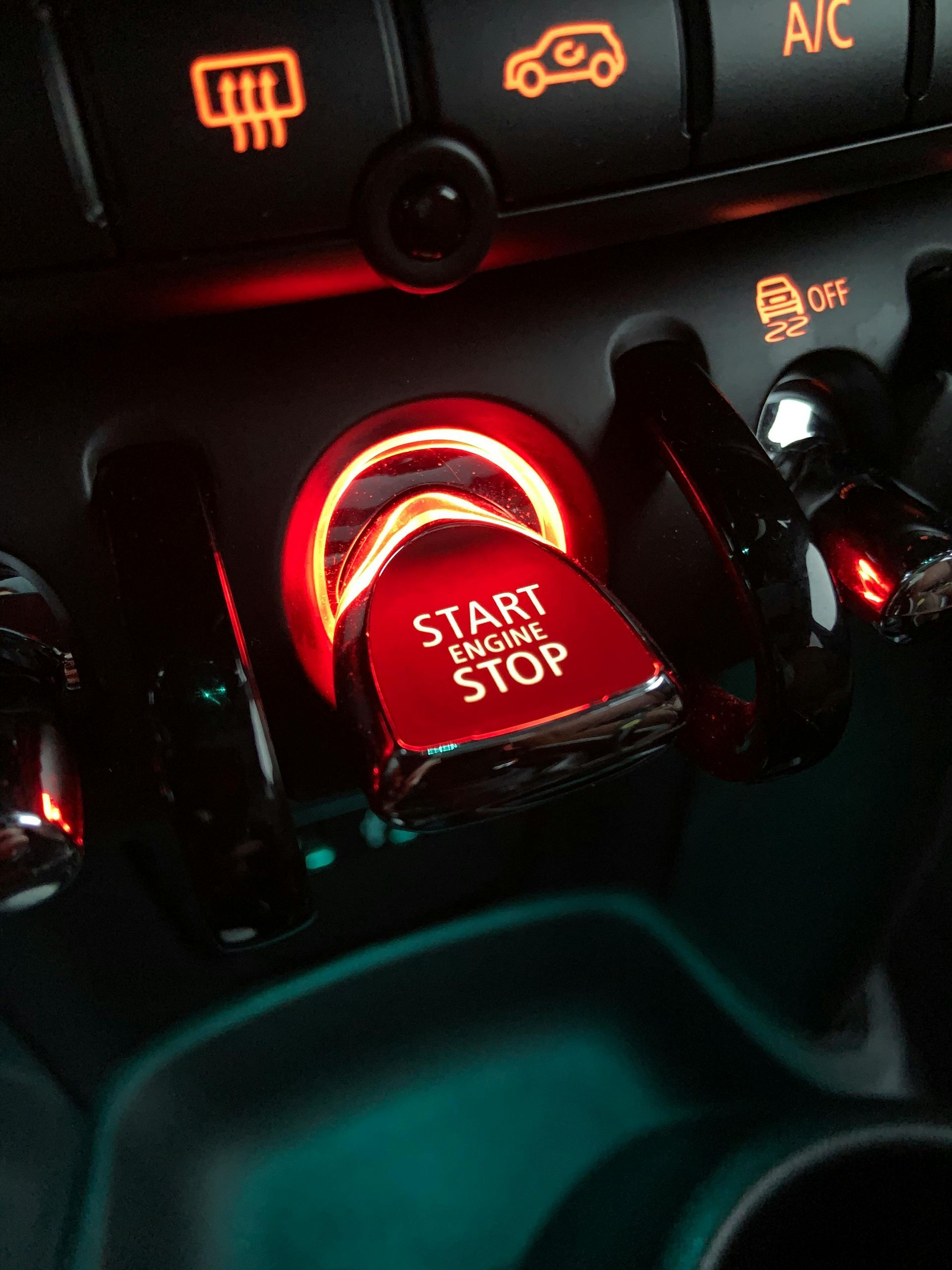Here’s How to Get a Nuclear Deal with Iran Now
Below are the remarks Dr. Ford delivered to a webinar sponsored by the National Institute for Deterrence Studies on August 29, 2025.
Good morning, everyone, and thanks – as always – to Peter Huessy and the National Institute for Deterrence Studies (NIDS) for having me back to one of these events.
I’ve been struggling professionally for a long time now with the threats presented by Iran’s nuclear program and Tehran’s efforts to position itself for nuclear weaponization. In fact, this challenge has been a periodic preoccupation of mine ever I first joined the U.S. State Department bureau dealing with arms control and nonproliferation treaty compliance issues way back in early 2003, just a few months after news first broke in public that Iran had been secretly building a uranium enrichment facility at Natanz.
That’s quite a long time ago now. I suppose I should be pleased that after watching this issue pretty closely for more than 20 years, we haven’t yet seen Iran produce a nuclear weapon. Nonetheless, it does feel like we’re at a pretty critical threshold point right now.
So I guess that’s a long-winded way of saying that this an important topic at an important time – so thanks for inviting me. As always, I can only offer my own personal opinions, which won’t necessarily reflect those of anyone else. But I am pleased to be able to offer some reflections on the Iran nuclear crisis and what chance there might still be for a good resolution.
The Most Recent Developments
It’s actually an especially good time to be discussing this right now, because it’s been a pretty eventful week on this topic. For one thing – as you’ve clearly been following in the press – the former Deputy Speaker of the Iranian Majles [Parliament] Ali Motahari has been reported to admit that Iran actually had intended to build nuclear weapons. As he put it in a 2022 video that has apparently only now surfaced, “our real goal was to build a bomb. No point denying it.”
Now in one sense that’s not news, for everyone who’s been paying any attention since August 2002 has pretty much known that. Indeed, the International Atomic Energy Agency (IAEA) has made public lots of information making that very clear years ago, and the Israelis managed to smuggle out of Iran some 55,000 pages of documentation – and a similar number of additional files on CDs, including videos – that provide extraordinary detail into Iran’s nuclear weapons work up through around at least 2003. The IAEA has also detailed how some of this weaponization-related work continued for a while thereafter, and Iran seems to have kept its weaponization team working together on relevant topics that can easily be leveraged back into weaponization whenever the regime wants to do so.
So in that sense, Motahari was basically telling everyone that the grass is green and the sky is blue. But it’s interesting nonetheless, despite its obviousness, and serves to re-highlight why this is all so important.
But the really interesting thing in the last few days is that Britain, France, and Germany have jointly informed the U.N. Security Council that they believe Iran is in “significant” violation of the 2015 Joint Comprehensive Plan of Action(JCPOA). This will trigger so-called “snap-back” sanctions under U.N. Security Council Resolution 2231 (UNSCR 2231) restoring full mandatory sanctions on Iran under international law, including the arms embargo, restrictions on ballistic missile production, asset freezes, and a visa ban.
That’s extremely important, and something that I’ve been urging them to do for some time now. I also think this is a crucial step that can now be used – if we are smart and clever and actually take the time an effort to engage in real diplomacy on this topic – to make a real negotiated solution to the Iranian nuclear problem possible.
So kudos to you, Peter, for having this discussion now. With your indulgence, therefore, I’d like to outline how I think such an approach to a solution might work.
Earlier this year, I published with the Center for Global Security Research at the Lawrence Livermore National Laboratory what was in principal part a short history of the Iranian nuclear negotiations, from the first public revelations about Natanz in August 2002 through the demise of the JCPOA. I also offered some musings about a possible negotiated solution based upon the invocation of “snap-back” sanctions under UNSCR 2231 before it expires this coming October. So I’d refer your viewers to that paper of mine for a lot more detail on the “how we got here” piece. It’s a complicated story.
For our purposes today, however, we should start with where we actually are right now, for even before the European invocation of “snap-back” this week, there have obviously been some very important developments since my CGSR paper came out in February.
The Summer 2025 Air Strikes
Most dramatically, of course, in June – with its remarkably successful campaign against Hezbollah in Lebanon having essentially removed the “deterrent” factor created by that terrorist organization’s rocket arsenal that many had long assumed would prevent direct Israeli moves against Iran – Israel launched a series of strikes upon Iran’s nuclear program. President Trump then added American firepower to the mix, with a single strike by B-2 bombers that dropped a fistful of our huge, “bunker-busting” GBU-57 munitions onto hardened underground nuclear facilities at Fordow and Natanz, and with some cruise missile strikes on surface facilities at Isfahan.
Debate has raged about how successful those American strikes were in destroying things that the Israelis had lacked the capability to damage, with President Trump immediately claiming that those targets had been “completely and totally obliterated” and some critics claiming that the U.S. strikes had been largely ineffective. As best one can tell from the outside, it would appear that the truth is somewhere in the middle – with the attack apparently having done a lot of damage and setting back Iran’s progress significantly, but certainly not erasing Iran’s program from the face of the Earth.
I’m sure that observers will be “armchair quarterbacking” the June 2025 air strikes for years, but I feel pretty comfortable in my conclusion that even if you think the Israelis moved too precipitously and quickly against Iran’s nuclear program, the United States really was right to drop those bunker-busters. When I ran the Weapons of Mass Destruction and Counterproliferation Directorate at the National Security Council in 2017, I distinctly recall speculating to National Security Advisor H.R. McMaster about just this kind of a scenario, advising him that “Bibi [Netanyahu] might be able to start it, but we would have to finish it.”
And I still think that’s right. The attacks certainly provoked and enraged Iran, which is admittedly risky. Once that line had been crossed, however, I’d much prefer that this angry Iran have a small, bashed-up nuclear capability than to have a large and intact one. So you might argue that Israel jumped the gun, therefore, but once the fight was on, President Trump absolutely did the right thing to try to destroy the most critical remaining Iranian nuclear capabilities. Hopefully the resulting damage is indeed great, which will buy us some time in which to try to work on a better and more enduring solution.
So where did the attacks leave us?
On the negative side, it seems clear that Iran does still have a technical pathway ahead of it for nuclear weaponization, and in principle it certainly can reconstitute what it has lost, potentially now being spurred by these hostilities to try even harder and sprint even faster. It also sounds like we may not have hit Iran’s stockpile of enriched uranium – a lot of which was already at level of 60 percent pure U-235, just a quick bump shy of proper weapons-grade, though you might be able to make a somewhat crude weapon with it even as is. This stockpile could easily become the feedstock for a clandestine enrichment “sprint” somewhere using only a fairly modestly-sized centrifuge cascade.
On the positive side, however, the U.S. attacks do appear to have set the Iranians back a lot, buying us some time that we did not previously have. It may also be, moreover, that the U.S. strikes have very constructively disabused the clerical regime in Tehran of any assumptions it may previously have made that neither the Americans nor the Israelis would, at the end of the day, prove willing to use military force to preclude Iranian weaponization.
The Challenge Now
What we can and will do with any time we have thus bought ourselves, of course, is precisely the question now. But I’d like to point out that if we want a good negotiated solution – and I dearly hope that we do – it’s time to get going on the diplomacy.
One of the biggest conceptual challenges here is that we’ve been very much up against a countdown clock, represented by the October 2025 expiration of Resolution 2231. And that’s why this week’s European announcement is so important.
Whatever you think of the ill-fated JCPOA negotiated by President Obama’s team and out of which President Trump pulled us in May 2018 – and, for the record, I myself have certainly criticized it plenty, speaking about this in public again, again, again, and again – one has to admit there was some pretty clever drafting that went into the formulation of Resolution 2231. I won’t bore you with the somewhat convoluted details, but the basic idea is that while Resolution 2231 lifted United Nations sanctions on Iran in 2015, it preserved the unilateral right of any JCPOA partner country to invoke so-called “snap-back” to re-impose all such sanctions at any point.
You might recall, in fact, that we tried to invoke such “snap-back” in 2020, during the First Trump Administration. This resulted in lots of debate, however, over whether the United States was still entitled to invoke the Resolution 2231 “snap-back” rule because we had by that point already declared ourselves to be out of the JCPOA. I think we were right on the law, since those who count as parties to the JCPOA for purposes of being entitled to invoke “snap-back” are expressly defined in the text of Resolution 2231, and that text has never been modified. Accordingly, even though we stopped participating, we were still legally entitled to trigger the re-imposition of sanctions for so long as Resolution 2231 remains on the books as written. As a result of the controversy over this, however, most countries just decided to ignore Secretary of State Mike Pompeo’s invocation of snap-back.
But whatever you think of that legal kerfuffle five years ago, invoking “snap-back” remained unquestionably available to Britain, to France, and to Germany. Or at least available until mid-October of this year, because Resolution 2231 has an expiration date. It evaporates on October 18, 2025, ten years after the JCPOA’s “Adoption Day” of October 18, 2015.
And this means that time was getting very short until the huge diplomatic leverage provided by U.N. sanctions “snap-back” became no longer available to us. After October 18, thanks to the prospect of Russian and Chinese vetoes at the Security Council, there would literally have been no way to impose full United Nations sanctions on Iran again, no matter how egregious its nuclear behavior.
Consequently, if we were to set in place the incentive structures needed to ground a good negotiated nuclear solution with Iran – as opposed, for example, to an ugly future of periodic “mowing the grass” military strikes trying to keep ahead of Iranian efforts at secret weaponization – we needed to act quickly, and in close conjunction with our European friends, who have a critical role to play that we must not continue to ignore.
Thankfully, they have now acted, and it’s time for us to work together on a diplomatic package that both gets Iran to table and gets it to agree to a meaningful and enduring resolution that isn’t just another round of JCPOA-style diplomatic can-kicking that merely postpones Iran’s nuclear weapons ambitions for a bit longer.
A Way Forward?
So how might one imagine a diplomatic plan capitalizing on Iran’s recent setbacks and leveraging the “snapping back” of U.N. sanctions that is now about to occur? Let me offer some thoughts.
Less to Ask Now?
I should begin by pointing out that while it surely will be challenging to get Iran to the negotiating table and to a successful negotiated solution, in some respects recent events may arguably have made the requirements for a negotiated solution at least somewhat easier to manage. What do I mean by that?
Well, as you’ll recall, when Secretary Pompeo spoke at the Heritage Foundation in May 2018 to outline the First Trump Administration’s criteria for what a good deal with Iran would look like, he voiced quite a few demands. In that admittedly rather maximalist laundry list, for example, he included Iran having to withdraw its forces from Syria, rein in Hezbollah, and cease developing nuclear-capable ballistic missiles.
For some time thereafter, this made the odds of a deal seem very slim indeed, for it was surely going to be extraordinarily challenging to persuade Iran to abandon these capabilities in addition to agreeing to the kind of “no fissile material production” requirements that were also part of the list. Indeed, even on the basis purely of the nuclear issues in question – and leaving aside questions of missiles, Syria, and Hezbollah – events in subsequent years were already making things seem very improbable.
However difficult it was to get Iran to negotiate away the modest-sized nuclear program and fissile material stocks it possessed in 2018, it was harder still to envision Tehran relinquishing the much larger program and stockpile the mullahs had soon acquired. This difficulty, moreover, grew greater almost every day as the Iranians continuously expanded their program from 2019.
Between the U.S. list of necessary non-nuclear concessions and the growing difficulty of envisioning Iran’s relinquishment of its ever-expanding nuclear capabilities and uranium stockpile, therefore, I became quite pessimistic. Had you asked me several months ago, for instance, I would have said that the odds of a negotiated resolution were extremely low indeed. With a “successful” negotiation needing to achieve so much, I imagined the better odds by far would be on Iranian weaponization, on war, or both.
But that’s why, despite their tensions and bloodshed, the last few months may perhaps have made things at least slightly more hopeful. Simply put, now that Hezbollah has been quite effectively smashed by the Israelis, the Assad regime in Syria has collapsed and Iranian advisors have been expelled, and Iran’s missile program has also been dealt significant reverses by Israeli air power, Iran now has less to do if it is to meet a reasonable set of criteria for regional good behavior.
Iran, in other words, has to give up fewer concrete capabilities now than it did before, for the simple reason that it has already been deprived of many of them. In a sense, the primary objective for the non-nuclear portions of a negotiated settlement have thus been reduced from persuading Iran to dismantle most of its capabilities for regional destabilization to simply persuading Iran to agree not to reconstitute them. That seems like a very different – and arguably much easier – task.
And now, with President Trump’s strikes against the underground facilities, Iran now also has a smaller nuclear program that it would have to dismantle. In effect, therefore, a range of circumstances have coincided to make the “endowment effect” – that is, the cognitive bias that leads people to find it much more difficult to give up what they already have than to forswear it in the first place – much less of an obstacle to successful negotiation than it was before.
On top of this, as I noted earlier, Iran can now no longer assume that we in the United States are too timorous to take action against Iran’s nuclear program. Nor can they any longer assume that the Israelis are too deterred by the prospect of hellfire from on high in the north of their country from Hezbollah rocketry to act directly against Iran. Both of those assumptions – if indeed Iran had made them – have been shown to be quite false.
All this leaves Iran, in other words, both with less that it would have to “do” for the successful conclusion of a deal and with a great deal more reason to do it.
Now that the Europeans have added the imminent restoration of United Nations sanctions into the mix before Resolution 2231 expires – thereby putting the mullahs in the position of having to negotiate their way out of such sanctions again in order to avoid economic catastrophe – you can see why I am more cautiously optimistic now than I was at the beginning of the year.
Envisioning a Diplomatic Plan
Now, to be sure, working sanctions “snap-back” into the mix would require some dexterity. But I think it certainly can still be done.
The most important part of this, of course – the first, and sine qua non element – has now happily occurred: for our European partners actually to invoke Resolution 2231 “snap-back,” thus restoring full U.N. sanctions against Iran just as if it were 2014 once again. This is the critical first step. Because Iran will now confront a future of indefinite, crippling United Nations sanctions if it does not reach a negotiated solution unless the Security Council gives it a reprieve – which of course we (or the Brits or the French) can now easily prevent by the use of our veto – Iran has to negotiate for its economic future.
But the point is to reach a deal, of course, and not simply to punish Iran. So we need to accompany this re-imposition of sanctions with some reasonably sophisticated multilateral diplomacy.
To help set things up right to maximize the chances for a deal, we now need to draft, introduce, and negotiate the passage of a new U.N. Security Council Resolution on Iran sanctions. This might be a somewhat complicated instrument, but I envision it involving, at the least, what might be termed a “double-block” mechanism.
That phrasing probably needs some explaining.
In the broadest sense, the new UNSCR would establish a pathway for once again lifting U.N. sanctions on Iran. (Remember, by the time this new resolution would be enacted, sanctions will already have “snapped back” under UNSCR 2231 thanks to the Europeans’ move this week.) This is important, because it would need to be clear that the new resolution would indeed provide Iran a pathway out of the problems caused for it by the European invocation of “snap-back.”
In this context, the first part of my envisioned “double-block” mechanism would be straightforward. For the same reasons that UNSCR 2231 had a “snap-back” provision in the first place – that is, the need to provide a means of re-imposing sanctions if Iran violated the deal, and to permit this to happen without such re-imposition being subject to a Russian or Chinese Security Council veto – the new resolution would need its own “snap-back” provision much like the one originally in Resolution 2231.
If and when sanctions were lifted again pursuant to the new resolution in the wake of an agreement with Iran, therefore, they would remain subject to future re-imposition via a new “snap-back” provision if Iran cheats on a future negotiated deal. (Ideally, by the way, I also envision the new resolution not having an expiration date. Perhaps we have now learned our lesson about such dates and the evaporation of leverage?)
But I described the new resolution as having a “double-block,” and that’s just the first “block.” The second one would derive from the fact that we wouldn’t want to make this hypothetical new Security Council resolution work exclusively as a tool with which to implement a successful deal (i.e., by lifting the U.N. sanctions that had “snapped back” before October 18, 2025) and with which to incentivize Iranian compliance (i.e., by holding out the possibility of re-imposition). That’s critical, of course, but we would also want to make it work at a tool to help us reach such an agreement in the first place.
To that end, we would need to have a second “block” mechanism that would apply to this new resolution’s lifting of sanctions in the first place. That is, the U.N. sanctions on Iran that are now resuming pursuant to European invocation of “snap-back” would under the new Resolution automatically be lifted again unless one or more of specified parties – presumably the same roster of ex-JCPOA partners, including us – objected. Only if all those countries agreed upon lifting the sanctions, therefore, would this occur.
Such a “double-block system,” in other words, would allow the United States and our European partners both to preclude sanctions relief for Iran unless a good negotiated solution were in hand, and to re-impose sanctions on Iran once more if it were discovered to be in violation of such a deal.
You might now be wondering, of course: could we get the presumptively Iran-protective Russians and Chinese to agree to such a Security Council resolution without vetoing it? Well, that’s where this week’s European invocation of UNSCR 2231 “snap-back” is also important, for the “default setting” of the Security Council will now be set on indefinitely continuing Iran sanctions unless action is taken to the contrary. And, as a Permanent Member of the Council, after all, we – or the British or French – could veto any proposal offering Iran sanctions relief, as indeed we should before a good deal is agreed.
Under “snap-back” now, the best way for Moscow or Beijing to protect the Iranian regime is therefore be to agree to my proposed new resolution containing its “double-block” mechanism, since that would be the only way (through a negotiated deal) to get the Council to agree to lift sanctions again.
This proposed “double-block” may sound a bit complicated, but it’s not conceptually much different than the clever formulation of the original UNSCR 2231 “snap-back” provisions. It would just now point itself, as it were, in two directions at the same time: (i) one that allows unilateral blockage of otherwise-automatic sanctions relief unless there’s a negotiated solution, and (ii) one that allows unilateral triggering of sanctions re-imposition in the event of an Iranian violation once such relief has been given after reaching an agreement.
So if you ask me, it’s time, now, to articulate such a plan openly and clearly, with U.S. officials working closely and speaking as one voice with their British, French, and German counterparts. Now that Europeans have invoked “snap-back,” the United States should – with them – draft and introduce the proposed “double-block” U.N. Security Council resolution I have described. This would show Iran that we really do envision a path forward that would allow them sanctions relief in return for a good faith agreement and their compliance therewith.
Hopefully the resolution then passes, enabling the real negotiations to begin. If it doesn’t pass, that’s on the Russians or Chinese who would have vetoed it, and Iran just has to live with sweeping U.N. sanctions for the foreseeable future. Tant pis, mon ami, as the French might say. (My system, as it were, “fails safe.”)
With a bit of luck, however, it would indeed pass, and this would be enough to focus everyone constructively on the task at hand. As a further backstop, of course, both we and the Israelis should make sure that we ostentatiously leave “on the table” the option of more drastic, and kinetic, remedies for Iran’s pursuit of dangerous and destabilizing nuclear capabilities.
Could This Actually Work?
Is this a magic formula that will guarantee success? Certainly not.
Remember, too, that all I’m describing here is a basic institutional substructure for such a negotiated deal with Iran. Even if Iran were induced to the table on such terms, we would still need actually to negotiate the details of any such agreement.
That’s by no means impossible, but we know from the JCPOA process a decade ago that the Iranians are skilled and wily negotiators, and that negotiating the details of any technologically-restrictive nuclear deal requires not just diplomatic skill and stamina but also the ability to draw in a sustained way upon enormous reservoirs of subject-matter expertise from our civil service and our national laboratories.
Under the best of circumstances within the ambit of a negotiation facilitated by the kind of “double-block” Security Council resolution I advocate, such negotiations would be difficult and complex. And that’s even before you get to the challenge of verification, and of devising and implementing appropriate inspection and monitoring authorities and capabilities in Iran – e.g., for the IAEA – for the indefinite future. I hope the U.S. side will be up to this.
Nevertheless, I would argue that something along these lines represents the best (and perhaps the only) approach that is still available for a decent nuclear deal. Under the present circumstances, moreover – in the aftermath of this summer’s air strikes and now with UNSCR 2231 “snap-back” in motion – we may actually have a fleeting window in which to have some chance of success, at least if we and our European friends don’t delay any further.
Conclusion
Maybe I’m too optimistic, but please bear me out for one final point. I can’t help feeling that if we approach this right – and if we can, to emphasize again, work closely with our European friends in ways that the current U.S. administration may be disinclined to do but that it is imperative we do nonetheless – we also have a chance to do a great deal of good even beyond the vital matter of solving the long-simmering Iranian nuclear problem.
Specifically, we may thus also have a chance to repair some of the grave damage that’s been done to the global nonproliferation regime by two decades of nervous temporizing and diplomatic can-kicking by the international community on Iran, and by the all but total failure of the nonproliferation regime to address North Korean nuclear weapons threats.
I don’t mean to suggest that a successful nuclear deal with Iran and – finally, in contrast to the JCPOA, an enduring one – would necessarily entirely heal or save the nonproliferation regime given all the challenges it faces today in a world that is now multipolar in both its geopolitics and in its nuclear weaponry. That would be a tall order.
But it does feel to me that the nonproliferation regime rather badly needs a “win” right now, and perhaps we can give it one. And it would certainly be marvelous indeed to demonstrate that nonproliferation diplomacy is capable of producing a real success when it’s built upon the right foundations of strength and diplomatic savvy.
Specifically, I’d love to see us take an approach that is: (a) is grounded in real and clearly articulable strategy; (b) employs clear and consistent messaging; (c) draws upon deep subject-matter expertise and technical competence, as well as skilled diplomatic interlocution; (d) is supported by keen political focus and unwavering resolve at the highest levels; (e) is undertaken in close coordination with key friends and allies; and (f) is backstopped by a demonstrable commitment to using force where necessary to prevent grave global ills.
That would truly be an excellent message to send to the future, and it would do the nonproliferation regime a world of good.
So here’s hoping.
Thank you.
—Christopher Ford









